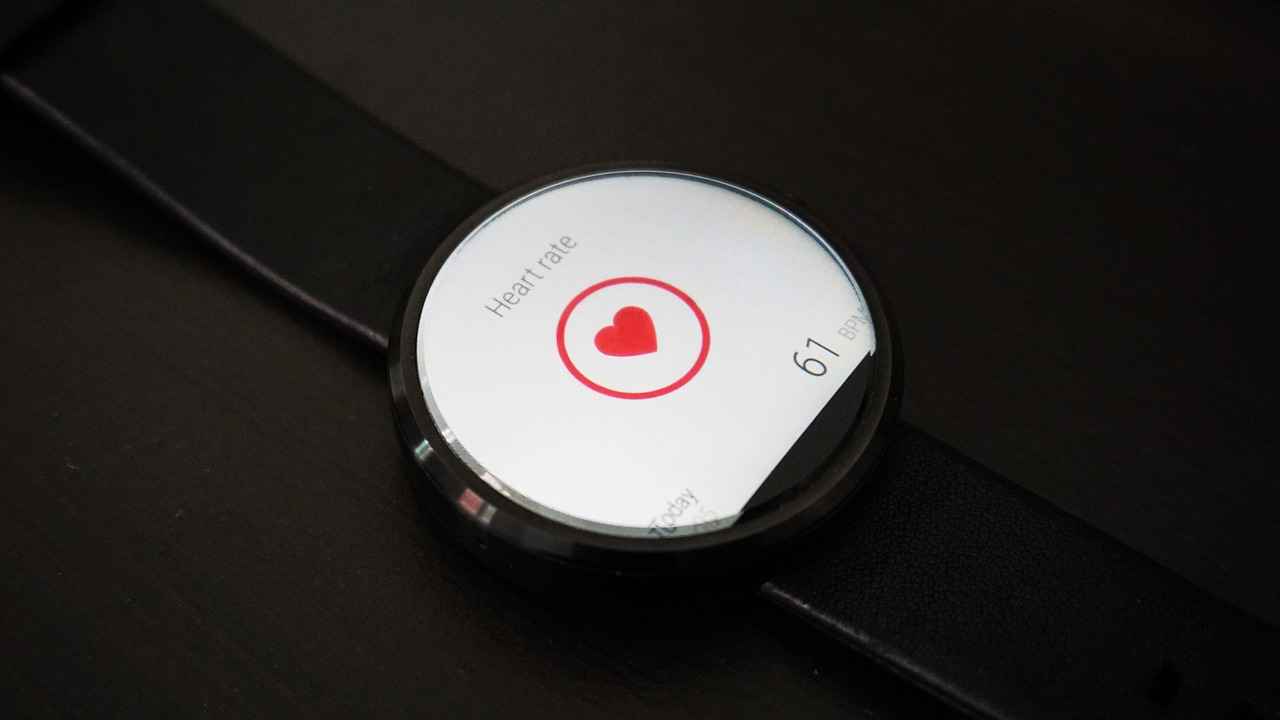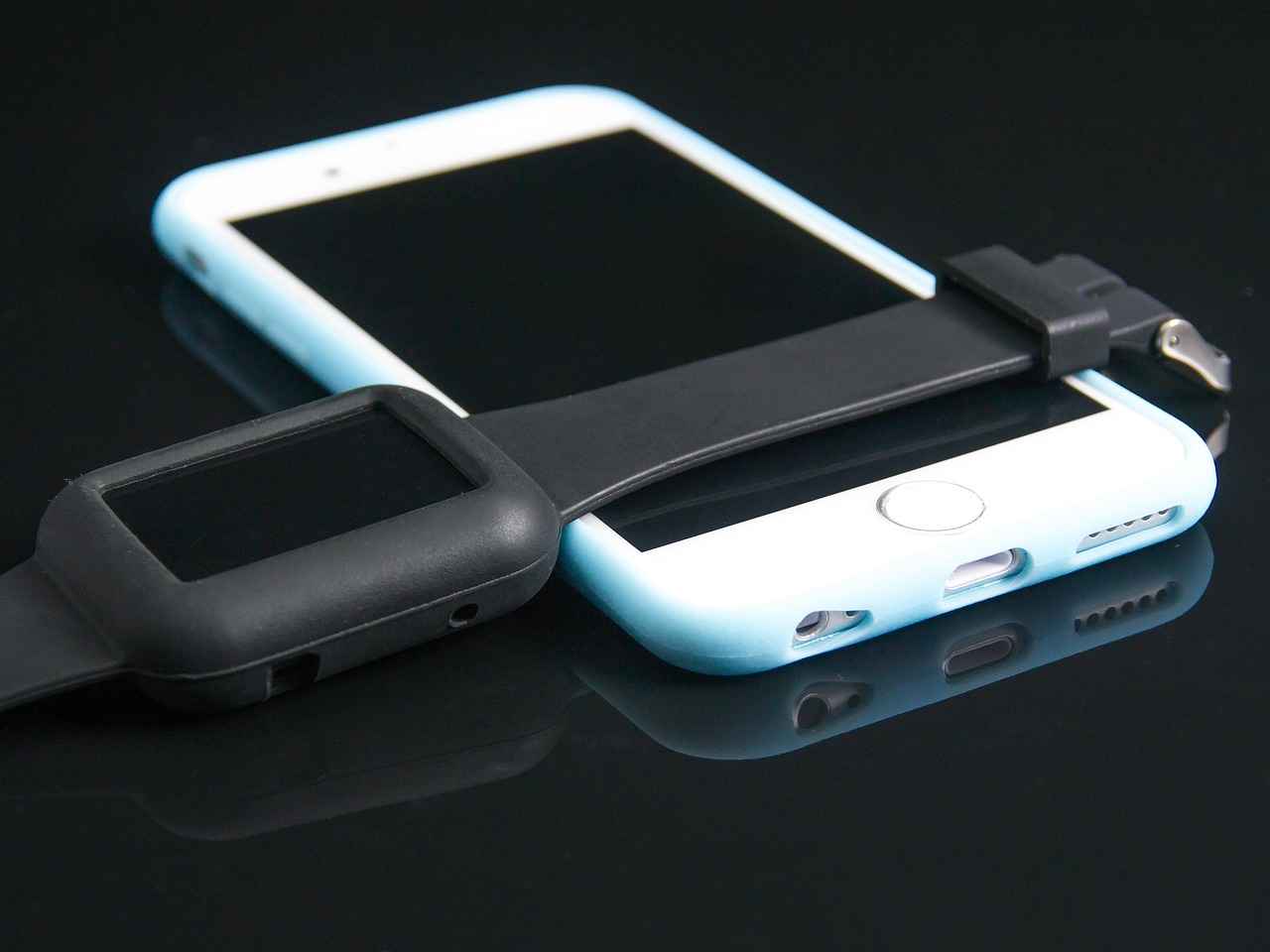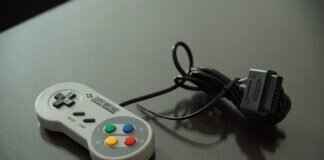This article delves into the common challenges faced by users when their smartwatches fail to connect to Wi-Fi. We will provide a comprehensive overview of troubleshooting steps, examine factors that may affect connectivity, and offer practical solutions to enhance your smartwatch experience.
Understanding Smartwatch Connectivity
Smartwatches depend heavily on Wi-Fi to access various features, including notifications, app updates, and more. A solid understanding of how these devices connect can significantly aid in diagnosing connectivity issues.
Common Reasons for Wi-Fi Connection Issues
- Software Glitches: Bugs in the smartwatch’s operating system can disrupt Wi-Fi connectivity. Regular updates are crucial for maintaining optimal performance and security.
- Incorrect Wi-Fi Settings: Misconfigured settings can prevent successful connections. Ensuring the correct network and password are entered is essential.
- Network Compatibility Issues: Not all smartwatches are compatible with every Wi-Fi network. Familiarizing yourself with your device’s specifications can help identify potential issues.
How to Resolve Software Glitches
To address software-related issues, it is vital to check for and install the latest updates. This process varies by device brand and model. Additionally, performing a simple reset can often clear temporary glitches.
Managing Wi-Fi Frequency Bands
Smartwatches may only connect to specific frequency bands, such as 2.4GHz or 5GHz. Knowing your device’s capabilities can aid in troubleshooting connection problems.
Router Settings and Interference
Router configurations, such as MAC address filtering or firewall settings, may block devices from connecting. Adjusting these settings can often resolve connectivity issues. Furthermore, other electronic devices can interfere with Wi-Fi signals, so minimizing these interferences is advisable.
Bluetooth vs. Wi-Fi Connection
Many smartwatches utilize Bluetooth to connect to smartphones, which can sometimes interfere with Wi-Fi connections. Managing these connections effectively can improve overall functionality.
Factory Resetting Your Smartwatch
If all else fails, a factory reset may be necessary. This process erases all data, so it should be done as a last resort after backing up important information. Each smartwatch model has specific steps for performing a factory reset, and familiarizing yourself with these can facilitate a smoother troubleshooting experience.

Understanding Smartwatch Connectivity
Smartwatches have become integral to our daily lives, offering a range of functionalities that enhance convenience and connectivity. A crucial aspect of their operation is Wi-Fi connectivity, which enables features like notifications, app updates, and data synchronization. Understanding how smartwatches connect to Wi-Fi can greatly assist in troubleshooting issues when they fail to establish a connection.
Most smartwatches utilize Wi-Fi to communicate with the internet, allowing users to access various applications and services without relying solely on their paired smartphones. This connectivity is essential for features such as streaming music, receiving notifications, and syncing health data with cloud services. However, several factors can disrupt this seamless connection.
- Network Configuration: Ensure that your Wi-Fi network is properly configured. Smartwatches typically connect to 2.4GHz networks, as they may not support 5GHz bands.
- Device Compatibility: Not all smartwatches are compatible with every router or network type. Check your device specifications to avoid compatibility issues.
- Signal Strength: Weak Wi-Fi signals can hinder connectivity. Position your router closer to your smartwatch to improve signal strength.
Additionally, software glitches can impact connectivity. Regular updates are vital for maintaining optimal performance and security. If your smartwatch is experiencing issues, checking for the latest software updates is a recommended first step. If problems persist, consider resetting your device, which can often clear temporary glitches.
Moreover, incorrect Wi-Fi settings, such as entering the wrong password, can prevent your smartwatch from connecting. Always verify that you are using the correct network credentials. Lastly, interference from other electronic devices or multiple Bluetooth connections can also disrupt Wi-Fi performance. Managing these connections effectively can enhance your smartwatch’s functionality.
In summary, understanding the intricacies of smartwatch connectivity to Wi-Fi is essential for troubleshooting and maintaining optimal performance. By being aware of potential issues and their solutions, users can ensure that their devices remain connected and functional.

Common Reasons for Wi-Fi Connection Issues
When it comes to smartwatches, establishing a reliable Wi-Fi connection is crucial for accessing various features and functionalities. However, users often encounter difficulties in connecting their devices to Wi-Fi networks. Understanding the common reasons behind these connectivity issues can significantly aid in troubleshooting and resolving the problems.
- Software Glitches: One of the most frequent culprits behind Wi-Fi connection problems is software glitches. These can arise from bugs in the operating system or outdated firmware. Regularly updating your smartwatch can help mitigate these issues and ensure optimal performance.
- Incorrect Wi-Fi Settings: Users may inadvertently enter the wrong Wi-Fi password or fail to select the correct network. Double-checking your network settings is essential for establishing a successful connection.
- Network Compatibility Issues: Not all smartwatches are compatible with every Wi-Fi network. Some devices may only connect to specific frequency bands, such as 2.4GHz or 5GHz. Understanding your smartwatch’s specifications can help identify potential compatibility issues.
- Router Settings: Certain router configurations, like MAC address filtering or firewall settings, can block devices from connecting. Adjusting these settings may resolve connectivity issues and allow your smartwatch to connect seamlessly.
- Bluetooth Interference: Many smartwatches rely on Bluetooth connections to sync with smartphones. If multiple Bluetooth devices are connected simultaneously, this can interfere with Wi-Fi performance. Managing your Bluetooth connections can help improve overall connectivity.
- Device Interference: External electronic devices can disrupt Wi-Fi signals. Identifying and minimizing sources of interference, such as microwaves or other wireless devices, can enhance your smartwatch’s ability to connect to Wi-Fi.
By addressing these common issues, users can improve their smartwatch’s connectivity and enhance their overall experience. Regular maintenance, such as updates and proper settings management, plays a vital role in ensuring a consistent and reliable connection.
Software Glitches
When it comes to smartwatches, maintaining a stable Wi-Fi connection is crucial for accessing various features, including notifications, updates, and apps. However, one of the most common culprits behind connectivity issues is . These glitches can arise from bugs in the smartwatch’s operating system, leading to frustrating interruptions in Wi-Fi connectivity.
Regular updates are essential to ensure optimal performance and security. Manufacturers frequently release updates to fix known bugs, enhance functionality, and improve user experience. Without these updates, your smartwatch may struggle to maintain a reliable connection to Wi-Fi networks.
To check for updates, navigate to the settings menu on your smartwatch. Look for the Software Update option, and follow the prompts to install any available updates. This process may vary depending on the brand and model of your device.
In addition to updates, performing a simple reset can often resolve temporary glitches. A reset clears the device’s memory and can restore connectivity by eliminating any minor software issues that may be affecting performance. Refer to your smartwatch’s user manual for specific instructions on how to perform a reset.
Another important aspect to consider is the network settings. Ensure that your smartwatch is configured with the correct Wi-Fi network and password. Incorrect settings can easily prevent a successful connection.
If you’ve taken these steps and still experience connectivity issues, it may be beneficial to explore other factors such as network compatibility or interference from other devices. Understanding these elements can provide a more comprehensive approach to troubleshooting your smartwatch’s Wi-Fi connectivity problems.
How to Check for Updates
Keeping your smartwatch up to date is essential for ensuring its optimal performance and functionality. One common issue users face is the inability to connect to Wi-Fi, often stemming from outdated software. Checking for updates is a simple yet crucial step to troubleshoot connectivity problems.
To begin, it’s important to understand that the process of checking for updates can vary significantly depending on the brand and model of your smartwatch. Here are some general steps that can guide you through the update process:
- Access Settings: Navigate to the settings menu on your smartwatch. This is typically represented by a gear icon.
- Find System Updates: Look for an option labeled ‘System’ or ‘About’ where you can find the ‘Software Update’ section.
- Check for Updates: Select the ‘Check for Updates’ option. Your smartwatch will connect to the internet to see if any new software is available.
- Install Updates: If an update is available, follow the prompts to download and install it. Ensure your device is charged or connected to a power source during this process.
In some cases, you may need to connect your smartwatch to your smartphone via an accompanying app to check for updates. This is particularly common with brands like Apple and Samsung, where the smartwatch relies on the phone for software management.
Regularly updating your smartwatch not only fixes bugs that might affect Wi-Fi connectivity but also enhances security and introduces new features. If you encounter persistent issues even after updating, consider performing a reset or checking your Wi-Fi settings.
Ultimately, staying on top of software updates is a proactive approach to maintaining your smartwatch’s performance and ensuring seamless connectivity.
Resetting the Device
When facing issues with your smartwatch, one of the most effective troubleshooting steps is . This process can often resolve temporary glitches that may be hindering its performance, especially when it comes to connecting to Wi-Fi. Understanding how to reset your specific smartwatch model can be crucial for restoring functionality.
There are generally two types of resets: soft reset and factory reset. A soft reset simply restarts the device and can be performed without losing any data. This is often the first step to take when experiencing connectivity issues. To perform a soft reset, locate the power button on your smartwatch and press and hold it until the device powers off. Wait a few seconds, then turn it back on.
In contrast, a factory reset will erase all data and settings, returning the device to its original state. This is a more drastic measure and should be considered only if other troubleshooting methods have failed. Before proceeding with a factory reset, it’s critical to back up your data to avoid losing important information. Most smartwatches offer a backup option through their companion apps, allowing you to save settings, apps, and personal data.
To perform a factory reset, follow these general steps, although specific instructions may vary by model:
- Navigate to the Settings menu on your smartwatch.
- Look for the System or General Management option.
- Select Reset or Factory Data Reset.
- Confirm your selection and follow any on-screen prompts.
After completing the reset, your smartwatch will reboot, and you will need to set it up again. This includes reconnecting to Wi-Fi networks and pairing with your smartphone, if applicable. Remember, while resetting can resolve many issues, it’s essential to identify the root cause of persistent problems to prevent them from recurring.
Incorrect Wi-Fi Settings
When it comes to connecting your smartwatch to Wi-Fi, incorrect settings can be one of the most common obstacles. Failing to input the correct network name (SSID) or password can prevent your device from establishing a connection. This issue is often overlooked, but it is crucial for ensuring a seamless experience with your smartwatch.
To troubleshoot this problem, start by verifying that you are attempting to connect to the correct Wi-Fi network. Sometimes, multiple networks may be available, and selecting the wrong one can lead to connectivity issues. Ensure that the network you are trying to connect to is indeed the one you want to use.
Next, double-check the password you are entering. Passwords are case-sensitive, meaning that even a small typo can result in a failed connection attempt. It might be helpful to write down the password or copy it from a secure source to avoid errors. If you have recently changed your Wi-Fi password, make sure that your smartwatch is updated with the new information.
Additionally, some smartwatches have specific settings that need to be adjusted for Wi-Fi connectivity. For instance, certain models may require you to enable Wi-Fi in the device settings before attempting to connect. Navigate to the settings menu on your smartwatch and ensure that Wi-Fi is activated.
In some cases, your smartwatch may only support specific Wi-Fi frequencies, such as 2.4GHz or 5GHz. Check the specifications of your device to ensure compatibility with your router’s settings. If your router is set to a frequency that your smartwatch does not support, it will not be able to connect.
- Verify Network Name: Make sure you are connecting to the correct SSID.
- Double-Check Password: Ensure that you enter the password accurately, paying attention to case sensitivity.
- Activate Wi-Fi: Confirm that Wi-Fi is enabled in your smartwatch settings.
- Check Frequency Compatibility: Ensure your router’s frequency settings match your smartwatch’s capabilities.
By following these steps, you can significantly improve your chances of successfully connecting your smartwatch to Wi-Fi. Remember, ensuring that all settings are correct is vital for a smooth and effective connection.

Network Compatibility Issues
When it comes to smartwatches, understanding network compatibility is crucial for seamless connectivity. Not all smartwatches are designed to work with every Wi-Fi network, which can lead to frustrating connectivity issues. In this section, we will delve deeper into the factors that affect network compatibility and offer practical insights to help you navigate these challenges.
Smartwatches typically connect to Wi-Fi networks to access various features, such as notifications, updates, and apps. However, the compatibility of your smartwatch with a specific Wi-Fi network can depend on several factors:
- Wi-Fi Standards: Most modern smartwatches support 802.11 b/g/n standards, but some may also support 802.11ac. Check your smartwatch specifications to determine which standards are supported.
- Frequency Bands: Many smartwatches are limited to the 2.4GHz band, while others can connect to both 2.4GHz and 5GHz networks. Knowing which band your device supports is essential for troubleshooting.
- Network Security Protocols: Some smartwatches may not connect to networks that use advanced security protocols. Ensure that your router settings align with your device’s capabilities.
To identify potential compatibility issues, start by reviewing your smartwatch’s specifications and the settings of your Wi-Fi network. Here are some steps to guide you:
1. Check your smartwatch model and its supported Wi-Fi standards.2. Verify the frequency band your router operates on.3. Ensure that your network security settings are compatible with your smartwatch.
If you encounter issues, consider resetting your router or consulting your smartwatch’s user manual for specific troubleshooting steps. Understanding these compatibility factors can significantly enhance your experience and ensure that your smartwatch connects smoothly to your Wi-Fi network.
Wi-Fi Frequency Bands
When it comes to smartwatch connectivity, understanding the intricacies of Wi-Fi frequency bands is essential. Smartwatches, like many other smart devices, often connect to Wi-Fi networks that operate on different frequency bands, namely 2.4GHz and 5GHz. Each band has its own characteristics, which can significantly impact the performance and reliability of your smartwatch’s connection.
The 2.4GHz band is widely used and offers a larger coverage area, making it ideal for devices that are further away from the router. However, this band is often crowded due to many devices sharing the same frequency, which can lead to slower speeds and increased interference. In contrast, the 5GHz band provides faster data rates and is less congested, but its range is shorter. This means that while you might enjoy superior speeds, you may need to be closer to your router for a stable connection.
To troubleshoot your smartwatch’s connectivity issues, it’s important to first check which frequency band your device supports. Some smartwatches are limited to the 2.4GHz band, while others can utilize both bands. If your smartwatch struggles to connect, consider the following:
- Check Device Specifications: Refer to your smartwatch’s user manual or manufacturer’s website to confirm its Wi-Fi capabilities.
- Router Settings: Ensure your router is configured to broadcast both frequency bands. Sometimes, settings may limit connectivity to a single band.
- Switch Bands: If your router supports dual-band functionality, try switching your smartwatch to connect to the 5GHz band for potentially better performance.
By understanding the differences between 2.4GHz and 5GHz, you can make informed decisions that enhance your smartwatch’s connectivity experience. This knowledge not only aids in troubleshooting but also ensures that you can fully utilize the capabilities of your device.
Router Settings
When it comes to connecting your smartwatch to Wi-Fi, play a crucial role. Issues such as MAC address filtering or specific firewall configurations can inadvertently block your devices from accessing the network. Understanding these settings is essential for troubleshooting connectivity problems and ensuring a smooth connection.
Many home routers come with built-in security features designed to protect your network. However, sometimes these features can be overly restrictive. For instance, MAC address filtering allows you to specify which devices are permitted to connect to your network by their unique MAC addresses. If your smartwatch’s MAC address is not listed as an allowed device, it will be unable to connect to Wi-Fi. To resolve this, you can:
- Access your router’s settings through a web browser.
- Locate the MAC address filtering section.
- Add your smartwatch’s MAC address to the allowed list.
Another common issue arises from firewall configurations. Firewalls are designed to monitor and control incoming and outgoing network traffic based on predetermined security rules. If your router’s firewall is too restrictive, it may block your smartwatch from connecting. To address this:
- Log into your router’s control panel.
- Find the firewall settings option.
- Adjust the settings to allow your smartwatch access, or temporarily disable the firewall for testing.
After making these adjustments, it is advisable to restart your router and smartwatch to ensure that the changes take effect. Regularly reviewing your router settings can help maintain a secure yet accessible network for all your devices.

Bluetooth vs. Wi-Fi Connection
Smartwatches have become indispensable gadgets for many, offering a range of features that enhance our daily lives. However, connectivity issues can arise, particularly when it comes to Bluetooth and Wi-Fi connections. Understanding the distinctions between these two technologies is crucial for troubleshooting connectivity problems.
Many smartwatches utilize Bluetooth to establish a connection with smartphones, allowing users to receive notifications, control music, and access apps. However, this reliance on Bluetooth can sometimes interfere with Wi-Fi connections, leading to frustration for users trying to connect their devices to the internet.
When a smartwatch is connected to a smartphone via Bluetooth, it may limit the bandwidth available for Wi-Fi connections. This is particularly noticeable in areas with many connected devices, as the Bluetooth connection can cause congestion, resulting in slower Wi-Fi performance.
- Disconnect Unused Devices: If your smartwatch is paired with multiple devices, consider disconnecting those not in use.
- Limit Background Activity: Ensure that apps running in the background on your smartphone are not consuming excessive bandwidth.
Other electronic devices, such as microwaves and wireless speakers, can also disrupt Wi-Fi signals. To enhance connectivity:
- Position Your Router Strategically: Place your router in a central location, away from potential sources of interference.
- Use Wi-Fi Extenders: If your smartwatch struggles to connect, consider using a Wi-Fi extender to boost signal strength.
By understanding the interplay between Bluetooth and Wi-Fi, users can take proactive steps to enhance their smartwatch connectivity. Regularly managing connections and being aware of environmental factors can significantly improve the performance of these devices.
Managing Bluetooth Connections
In today’s interconnected world, many devices rely on both Bluetooth and Wi-Fi to function seamlessly. However, managing these connections effectively is crucial for optimal performance, especially for devices like smartwatches. When multiple Bluetooth devices are connected simultaneously, it can lead to interference, ultimately affecting Wi-Fi performance.
Understanding how these technologies interact is essential. Bluetooth operates on a different frequency than Wi-Fi, yet both can compete for bandwidth. This competition can result in slower internet speeds, dropped connections, and lag in device responsiveness. To mitigate these issues, consider the following strategies:
- Limit Connected Devices: Try to minimize the number of Bluetooth devices linked to your smartwatch. Disconnect any devices that are not in use to free up bandwidth.
- Prioritize Connections: If your smartwatch allows it, prioritize the most important Bluetooth connections. This can help ensure that essential devices maintain a stable connection.
- Optimize Device Placement: Ensure that your smartwatch and connected devices are within a reasonable range of each other. Physical barriers can also affect signal strength, so keep devices close together when possible.
- Regularly Update Software: Keeping both your smartwatch and Bluetooth devices updated can help improve compatibility and performance. Manufacturers often release updates that enhance connectivity.
By managing Bluetooth connections effectively, users can enhance their overall experience with smartwatches and other devices. This proactive approach not only improves Wi-Fi performance but also ensures that users can take full advantage of their devices’ features without interruption.
In summary, understanding the relationship between Bluetooth and Wi-Fi connections is vital for maintaining optimal functionality in smartwatches. By implementing these strategies, you can significantly enhance your device’s performance and connectivity.
Device Interference
When it comes to ensuring your smartwatch maintains a stable Wi-Fi connection, one significant factor to consider is . Various electronic devices can disrupt Wi-Fi signals, leading to connectivity problems. Understanding these interferences is crucial for enhancing the performance of your smartwatch.
Modern homes are filled with numerous electronic devices, each emitting signals that can potentially interfere with Wi-Fi communications. Common culprits include:
- Microwave Ovens: These appliances operate on similar frequencies as Wi-Fi, particularly in the 2.4GHz range, causing interruptions when in use.
- Bluetooth Devices: While Bluetooth and Wi-Fi operate on different protocols, they can still compete for bandwidth, especially in crowded environments.
- Wireless Speakers: Devices that use wireless technology to connect can also disrupt Wi-Fi signals, particularly if they are using the same frequency band.
- Baby Monitors: Many baby monitors utilize similar frequencies, which can lead to interference with your smartwatch’s connectivity.
- Other Wi-Fi Networks: In densely populated areas, overlapping Wi-Fi networks can cause congestion, making it difficult for your device to maintain a stable connection.
To minimize these interferences and improve your smartwatch’s connectivity, consider the following strategies:
- Reposition Your Router: Placing your Wi-Fi router in a central location can help reduce the impact of interference from other devices.
- Change Wi-Fi Channels: Most routers allow you to switch channels, which can help avoid interference from neighboring networks.
- Limit Electronic Devices: Reducing the number of active devices during critical usage times can enhance your smartwatch’s connectivity.
- Use 5GHz Band: If your smartwatch supports it, connecting to a 5GHz network can reduce interference, as it is less crowded than the 2.4GHz band.
By identifying and minimizing these interferences, you can significantly enhance the connectivity of your smartwatch, ensuring it functions smoothly and efficiently.

Factory Resetting Your Smartwatch
When it comes to troubleshooting your smartwatch, factory resetting can be a necessary step, especially when all other methods have failed. This process involves restoring the device to its original settings, which can effectively resolve persistent issues, including connectivity problems. However, it is crucial to understand the implications of this action.
Before proceeding with a factory reset, it is essential to back up your data. This ensures that you do not lose any important information, such as contacts, messages, and app data. Most smartwatches offer built-in options to back up data either through a companion app on your smartphone or via cloud services. Always check your device’s documentation for specific instructions on how to perform a backup.
Each smartwatch model has its own method for performing a factory reset. While the exact steps may vary, the general process typically includes the following:
- Navigate to the Settings menu on your smartwatch.
- Look for the System or General Management option.
- Select Reset or Factory Data Reset.
- Confirm your choice, understanding that this will erase all data on the device.
After confirming the reset, your smartwatch will restart and begin the process of erasing all personal data and settings. This may take a few minutes, after which you will need to set up your device as if it were new.
While a factory reset can resolve many issues, it should always be considered a last resort. If you find yourself frequently needing to reset your smartwatch, it may be worth investigating underlying issues such as software compatibility or hardware malfunctions.
In summary, a factory reset can be an effective solution for persistent problems with your smartwatch. Just remember to back up your data first and follow the correct steps for your specific model to ensure a smooth process.
Backing Up Data
Backing up your smartwatch data is a crucial step before performing a factory reset. This process not only safeguards your personal information but also ensures that you can restore your settings, preferences, and apps after the reset is complete. Losing valuable data can be frustrating, especially if you rely on your smartwatch for fitness tracking, notifications, and other essential functions.
Before diving into the backup process, it’s important to understand what data you should consider backing up. Common data types include:
- Health and Fitness Data: This includes workout history, heart rate data, and other health metrics.
- Apps and Settings: Many smartwatches allow you to customize settings and install various applications that enhance functionality.
- Contacts and Messages: Syncing your contacts and message history ensures you don’t lose important communication links.
- Personal Preferences: This includes watch faces, themes, and notifications settings that make your experience unique.
To effectively back up your smartwatch data, follow these steps:
- Connect to the Companion App: Most smartwatches have a companion app on your smartphone. Open this app and look for backup options.
- Use Cloud Services: Many devices offer cloud backup solutions. Ensure your smartwatch is connected to Wi-Fi and follow the prompts to back up your data to the cloud.
- Manual Backup: For some models, you can manually export data via a USB connection to your computer. Check your device’s user manual for specific instructions.
Once you have successfully backed up your data, you can proceed with the factory reset with peace of mind, knowing that your important information is safe. Remember, taking these precautions not only protects your data but also streamlines the process of setting up your smartwatch again after the reset.
Steps to Perform a Factory Reset
When troubleshooting connectivity issues with your smartwatch, one of the most effective solutions can be performing a factory reset. This process can resolve persistent problems by restoring the device to its original settings. However, the steps to perform a factory reset can vary significantly between different smartwatch models. Understanding these steps is crucial for a seamless troubleshooting experience.
Importance of Familiarity with Reset Procedures
Each smartwatch brand and model has its own unique method for executing a factory reset. Familiarizing yourself with the specific instructions for your device can save you time and frustration. It ensures that you can efficiently reset your smartwatch when necessary, without the risk of accidentally deleting important data or misconfiguring settings.
General Steps for Factory Resetting a Smartwatch
- Access Settings: Start by navigating to the settings menu on your smartwatch. This is typically represented by a gear icon.
- Find System or General Options: Look for a section labeled ‘System’ or ‘General’ within the settings menu. This section often contains options for resetting the device.
- Select Reset: Within the system options, you should see an option for ‘Reset’ or ‘Factory Reset’. Select this to proceed.
- Confirm Your Choice: Most devices will prompt you to confirm that you want to proceed with the reset. This step is crucial as it ensures you are making an intentional decision to erase all data.
- Wait for the Process to Complete: After confirming, your smartwatch will begin the reset process. This may take a few minutes, so be patient.
Model-Specific Instructions
To ensure accuracy, it is advisable to consult the user manual or the manufacturer’s website for model-specific instructions. Some smartwatches may require additional steps, such as entering a PIN or password, while others might offer a reset option directly from the device’s power menu.
Final Considerations
Performing a factory reset should be a last resort after attempting other troubleshooting methods. Always ensure that you have backed up any important data before proceeding, as this process will erase all content from your smartwatch.
Frequently Asked Questions
- Why won’t my smartwatch connect to Wi-Fi?
There could be several reasons for this. Common issues include software glitches, incorrect Wi-Fi settings, or even network compatibility problems. Make sure your device is updated and that you’re entering the correct network details.
- How can I check for software updates on my smartwatch?
To check for updates, navigate to your smartwatch’s settings menu. Look for an option labeled ‘Software Update’ or ‘System Update.’ This process may differ based on the brand and model of your smartwatch.
- What should I do if my smartwatch still won’t connect after a reset?
If a reset doesn’t solve the problem, consider performing a factory reset. Just remember to back up your data first, as this will erase everything on the device.
- Can interference from other devices affect my smartwatch’s Wi-Fi connection?
Absolutely! Other electronic devices, like microwaves or cordless phones, can interfere with Wi-Fi signals. Try to minimize these interferences by moving closer to your router or turning off other devices.
- What are the differences between Bluetooth and Wi-Fi connections on smartwatches?
Bluetooth is primarily used for connecting your smartwatch to your smartphone, while Wi-Fi allows for internet access. Sometimes, having multiple Bluetooth devices connected can affect your smartwatch’s Wi-Fi performance.














